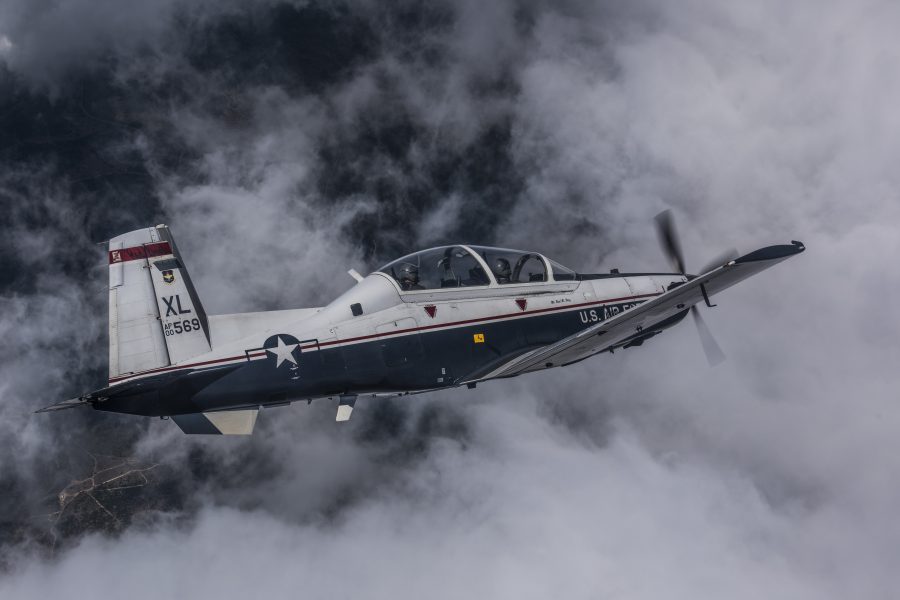The Air Force only saw five hypoxia-like events in its T-6A trainer fleet in the first three months of 2020—a 50-percent drop from the same period the year before, according to data obtained by Air Force Magazine.
For the first half of fiscal 2020—stretching from October to March—the rate of these events, also known as physiological episodes, was about 33 percent lower than what was seen over the entirety of fiscal 2019. This rate is calculated as the number of incidents per 100,000 flight hours.

Even though 2020 has been largely marked by COVID-19, Col. William E. Nelson, a member of the Air Force Physiological Episodes Action Team and the Medical and Human Performance Division Chief in the Air Force Special Warfare Directorate, said he didn’t think the pandemic was a contributing factor to the drop in physiological events because the virus hadn’t really become “a factor” until March.
“Even if we’re flying less than one would expect, hopefully, then we’re experiencing fewer events, or episodes, because of the lower number of flying,” added Brig. Gen. Gregor J. Leist, who heads the Air Force Physiological Episodes Action Team, as well as serving as special assistant to the director of the Air National Guard for Air Force Training and Readiness. “And so it would still be … quantified as a rate per hundred thousand hours.”
Leist said his team thinks multiple factors played a part in reducing T-6 incidents over the past few years, including purging moisture from breathing systems and increasing the T-6’s engine-idle speed to ensure it produces enough gas for Texan pilots to breathe easy.
Nelson also suggested that the Air Force’s efforts to familiarize aviators with hypoxia’s unique impacts on them, teach them to recognize the signs of a potential physiological episode, make them conscious of breath control, and encourage them to describe their symptoms verses jumping to their own conclusions about what might’ve gone wrong in the air may have played a role in reducing these occurrences.
Despite the progress reflected by the data, Leist said the team still isn’t satisfied with where the Texan stands.
“We understand in this demanding environment, there’s gonna be equipment failures that happen in flight that’ll cause these events,” Leist said. “We hope, though, that we can drive the unexplained part of that out of the equation. The physiological events, you know, things are gonna happen, but we want to be able to explain to the pilot, and to the safety community, and to the aviation community, you know, what’s actually happening when these events occur.”
The Navy recently finished its deep dive into the origins of physiological episodes linked to aircraft malfunctions within its T-45 and F-18 aircraft, and declared the mystery solved, USNI reported last month.
The verdict as to why these issues continue to afflict Air Force fleets—including, but not limited to, the Texan—is still out, but the team has made some headway, Leist said.
USAF has ruled out a hypothesis that contaminated air was causing episodes within the T-6 fleet, and research is currently underway at Wright-Patterson Air Force Base, Ohio, to determine whether “rapidly oscillating oxygen levels” may be at least partially to blame for these events in the T-6 fleet, Leist said. Regardless, he said, the new and improved oxygen concentrator that’s aimed at keeping oxygen-production levels more stable in the trainer “is fully funded and … expected to be fielded beginning in” fiscal 2022.
